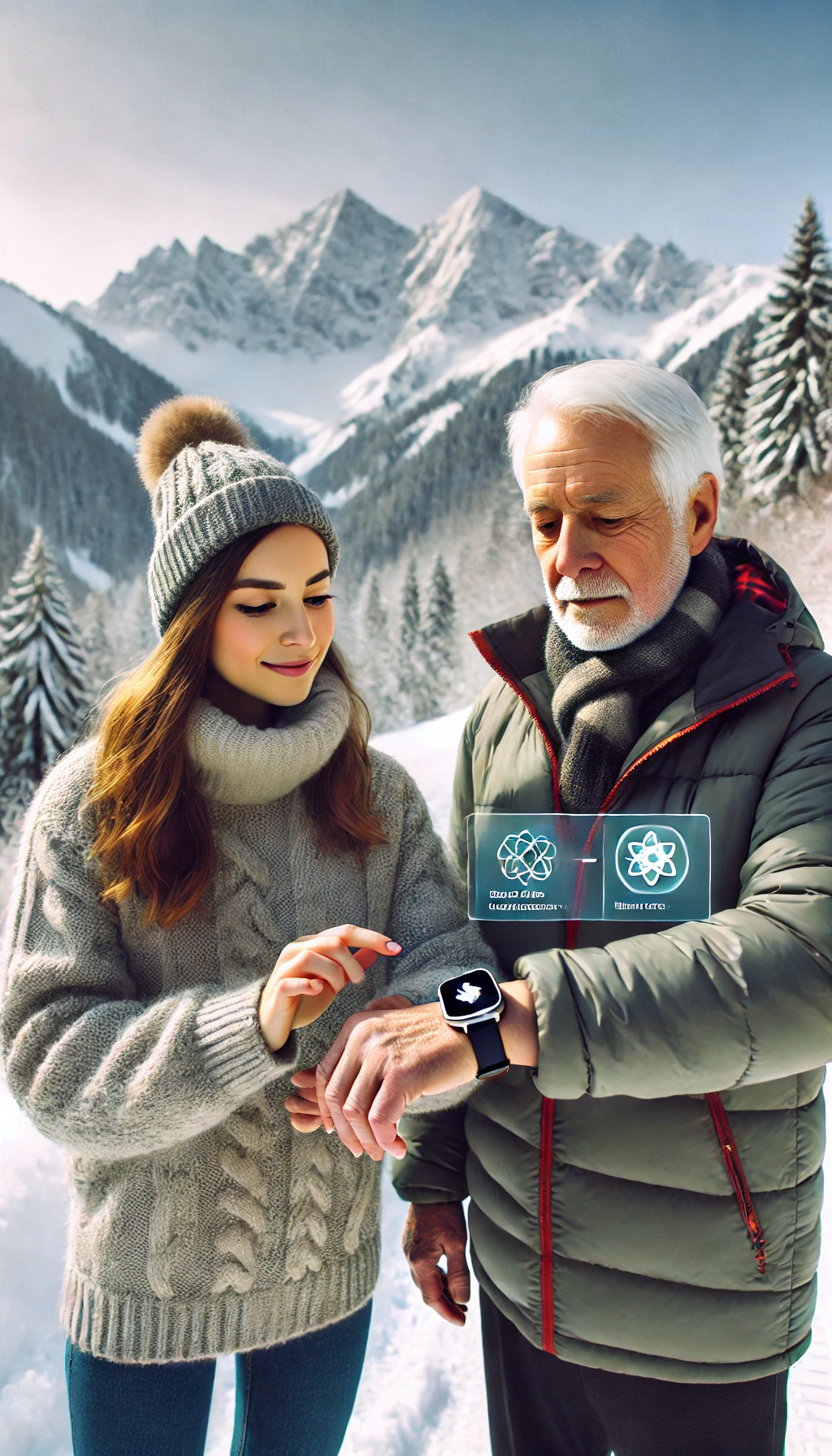
Sergio d'Arpa é um empresário e autor italiano, conhecido por suas contribuições à medicina digital e preditiva. Ele é o fundador e CEO da Klinik Sankt Moritz AG, reconhecida como a primeira clínica totalmente digital do mundo.
Entre suas principais inovações, d'Arpa desenvolveu o conceito de Digital Twin for Health, uma representação virtual do paciente que integra dados de dispositivos vestíveis, aplicativos e testes moleculares. Essa tecnologia permite o monitoramento contínuo da saúde, avançando na medicina preditiva e na prevenção de doenças.
Ele também foi pioneiro no conceito de Longevidade Aumentada, concentrando-se no uso de tecnologias avançadas para ampliar e melhorar a qualidade de vida. Ao integrar dados epigenéticos com análise de estilo de vida, seu trabalho visa oferecer soluções personalizadas para promover a longevidade.
d'Arpa contribui com uma coluna de saúde digital para a Tiscali, onde explora tópicos como inteligência artificial, dispositivos médicos inovadores e o impacto da tecnologia na medicina moderna.
Sua experiência em supercomputação e automação levou ao desenvolvimento de sistemas complexos capazes de processar dados em grande escala, essenciais para a implementação de soluções médicas preditivas e personalizadas.
Em resumo, Sergio d'Arpa é uma figura de destaque em inovação médica, comprometido com a transformação do setor de saúde por meio de tecnologias digitais avançadas, com foco no aprimoramento da prevenção e na melhoria da qualidade de vida dos pacientes.
Sou um aspirante a pai, empresário, autor, palestrante e especialista em supercomputação. "Aspirante" porque continuo tentando, sem entender completamente como funciona, embora eu suspeite que não estou sozinho nisso.
https://innovazione.tiscali.it/rubriche/sergio-d-arpa/
https://www.linkedin.com/in/sergiodarpa
https://www.verduci.it/en/category/verduci-digital-twin-en/
[email protected]
Telegrama @sergiodarpa
+39 388 361 7433
Minha jornada na solução de problemas complexos e o caminho para a longevidade
Sempre me dediquei a resolver problemas complexos e a desenvolver soluções avançadas na Web. Veja o caso do ADSL, por exemplo: superficialmente, pode parecer simples, mas o gerenciamento de todas as atividades envolvidas - entrega na última milha, coordenação de funcionários, conformidade regulamentar e requisitos legais - o torna incrivelmente complexo.
Imagine a implantação de ADSL em toda a Europa, com cada país tendo seu próprio conjunto de regulamentações de última milha. Isso significava gerenciar diferentes contratos, idiomas e estruturas de preços para cada mercado.
Sempre fui responsável por sistemas de grande escala e alta complexidade que exigiam respostas automatizadas a milhões de solicitações semelhantes diariamente. O manuseio manual era impossível, portanto, eu dependia da supercomputação para automatizar esses processos. O que hoje chamamos de inteligência artificial (IA) era, em essência, a automação e o poder computacional necessários para atender a essas demandas. Naquela época, não era uma "IA generativa" como a conhecemos hoje, mas era um processamento inteligente, mesmo assim.
Por exemplo, certa vez desenvolvi um mecanismo de busca para localizar pessoas que vendiam carros, com base na percepção de que alguém que vendia um carro provavelmente estava no mercado para comprar outro. Desde então, o mercado evoluiu - hoje, quem vende um carro pode comprar uma bicicleta elétrica ou uma scooter. Mas o princípio de criar soluções com base em dados complexos continua o mesmo.
Ao longo de minha carreira, sempre busquei produtos complexos e inovadores e pesquisas avançadas. Então, um dia, me mudei para Saint Moritz e descobri que tinha pressão alta. A 2.000 metros acima do nível do mar, isso era perigoso. Minha esposa na época, que era médica, ficou muito preocupada, mas talvez hoje ela tenha uma opinião diferente!
Ela me alertou sobre os riscos. Em uma tentativa de gerenciar o problema, mencionei casualmente que baixaria um aplicativo para monitorar minha pressão arterial remotamente, pensando que seria uma solução simples. Para minha surpresa, não existia nenhum aplicativo que pudesse rastrear e relatar de forma confiável minhas métricas de saúde em tempo real. Isso expôs uma lacuna significativa no setor de saúde, que permanece até hoje.
A lacuna não está apenas no setor de saúde, mas também entre os campos especializados. Temos engenheiros e médicos altamente qualificados, ambos operando em domínios intensamente verticais. No entanto, há pouca colaboração entre esses campos.
Isso cria uma abordagem em silos para a inovação, com cada solução abordando áreas restritas, como saúde cardiovascular, ortopedia ou dermatologia. A medicina holística existe, mas raramente se aprofunda o suficiente para integrar especialidades verticais de forma eficaz.
Trazer uma perspectiva "horizontal" para um mundo tão altamente verticalizado é um desafio. Passo horas treinando especialistas para que adotem uma visão mais ampla, com o objetivo de incutir uma mentalidade interdisciplinar.
No entanto, as equipes interdisciplinares geralmente simplesmente alinham os especialistas lado a lado, o que é uma abordagem delegada para obter uma visão integrada, em vez de uma visão verdadeiramente holística. Para alcançar a longevidade e o atendimento abrangente ao paciente, precisamos de uma visão inerentemente horizontal - que não seja apenas uma colcha de retalhos de especialidades.
Isso é especialmente desafiador no campo da medicina, onde a profundidade e o rigor são justamente valorizados. Os médicos, treinados para se aprofundar em suas especializações, têm dificuldade em abordar os problemas com a flexibilidade necessária. Não se trata de enfraquecer a profundidade, mas de promover um grau de adaptabilidade que lhes permita ver o panorama geral.
Meu objetivo, apesar de eu mesmo não ser médico, é cultivar essa mentalidade. É uma missão difícil - orientar profissionais cuja dedicação à profundidade é profunda para uma abertura a um pensamento mais amplo. Mas se quisermos alcançar a verdadeira longevidade e a saúde preventiva, essa integração é essencial.
Alguém precisa superar essa divisão, e estou empenhado em fazer isso. Sem uma abordagem coesa e interdisciplinar, corremos o risco de perder a visão mais ampla necessária para avançar na área da saúde e promover a longevidade de forma significativa.

